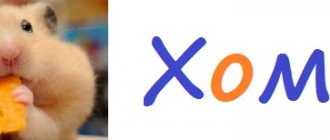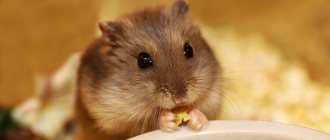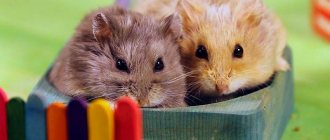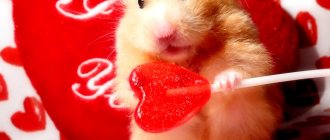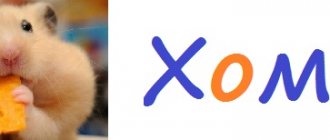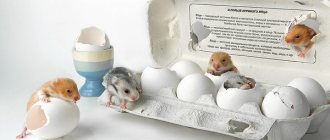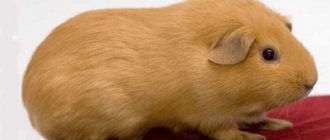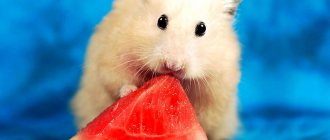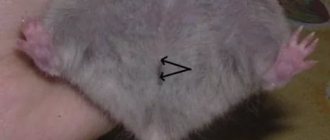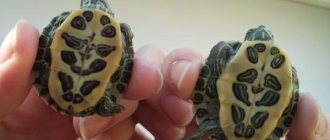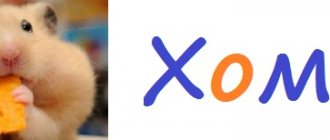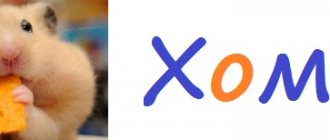- General Content Rules
- Required and permitted products
- Dry food, cereals
- Fruits, berries
- Vegetables
- Green feed
- tree branches
Djungarian hamsters are one of the most beloved, good-natured, charming pets to keep at home.
They quickly get used to being handled and almost never bite. Very tiny, no more than 7-10 centimeters in length, they are significantly smaller in size than Syrians, unpretentious, and do not require special attention. It is important to remember: proper care and feeding are the key to good health and long life of a rodent. Under natural conditions, the animals do not live long, barely reaching one and a half years. The reason for this is disease, poor nutrition, and predators that hunt hamsters. A calm home environment, absence of stress and illness prolongs life to 3 years or more.
The opinion is that dzhungarikas can eat anything. Although they look like mice, they are not nearly as tough. Fat girls constantly gnaw, not refusing any food offered. But only high-quality food and the right menu will help ensure a good mood for hamsters and maintain health. When getting a small rodent, owners need to familiarize themselves with the rules for keeping dwarf hamsters and find out what to feed dwarf hamsters at home.
Basics of nutrition at home
Rodents are omnivores and will eat anything that is offered to them. Unlike wild animals, domestic animals live up to 3 years thanks to a balanced diet. Special dry food is suitable for this. You can cook it yourself. The food includes what these animals eat in the wild: fruits and grains.
Special dry food is suitable for feeding hamsters.
Proper diet: composition
The basis of the rodent diet is cereals. It is advisable to give fresh and dried grass every 2 days, because in the steppe greens are the hamster’s main food in the summer. Vegetables and fruits are a small part of the diet, no more than 5% of food consumed. To be healthy, rodents need animal protein, which makes up a small proportion of their diet. Increasing the amount of meat and dairy foods is useful during pregnancy or breastfeeding.
Nuts and seeds are a treat, they should be given a little and no more than 2-3 times a week.
Water for Djungarian hamster
Such pets need to drink regularly, therefore, a bowl of water should be in the cage around the clock.
The main thing that:
- The water was clean. Advice: give only filtered or spring water. Boiled water is contraindicated.
- Make sure that there are no foreign objects floating in the bowl with liquid.
- Change the water at least 3 times a day.
- Wash the bowl daily.
Any juices, fruit drinks or decoctions for drinking by hamsters are contraindicated.
List of recommended products
Experienced breeders argue about the benefits of some products, but there is a basic list of food necessary for a hamster.
Vegetables
Vegetables in a rodent's diet include:
- cucumbers;
- pumpkin;
- bell pepper;
- carrot;
- zucchini;
- tomatoes;
- eggplant;
- broccoli.
Among vegetables, cucumbers are included in the diet.
Fruits
Fruits are important for the normal functioning of your pet's digestive system due to their high fiber content. It is best to give a banana, pear, apple. You can try treating your pet to peaches and plums, but be careful.
Exotic fruits often contain substances that are dangerous to the hamster. They are excluded from the diet.
Berries
Berries should not be sour. You can feed your pet:
- strawberries;
- strawberries;
- lingonberries;
- rowan;
- currants;
- rosehip;
- blueberries;
- cherries and pitted cherries.
You can feed your pet strawberries.
Grapes are given carefully and little by little.
Greenery
Rodents eat a lot of greens, so you need to include in their daily diet:
- nettle;
- plantain;
- dandelions;
- alfalfa;
- basil;
- carrot and beet tops;
- lettuce leaves;
- dill and parsley in small quantities.
Before feeding, the collected herbs should be washed and dried. Greens picked within city limits contain toxins that are dangerous to the hamster. Fresh grass can be dried for the winter.
Animal protein for the carnivorous dwarf
Rodents eat insects and snails, so they need animal protein. Pets are fed meat cooked without salt and spices. Pork, beef, turkey, chicken and lean fish are suitable for hamsters. Boiled chicken or quail eggs are given 2 times a week.
Rodents eat boiled chicken eggs.
Insects need to be purchased at a pet store, because earthworms and butterflies caught within the city can be toxic to a hamster.
Cereals
Cereals are the basis of the diet of rodents. Special foods include:
- corn;
- barley;
- rye;
- oats;
- wheat.
When collecting cereals yourself, you need to check whether they are infected with a fungus, since ergot is a common disease of cereals. If ingested, it can cause paralysis and lead to death. The collected grain must be dried, as moisture promotes the appearance of fungus.
Buckwheat, peas, lentils and chickpeas are suitable for hamsters. Beans are heavy food for an animal's weak stomach.
Milk
It is not recommended to feed hamsters dairy products as they are too fatty for them. During pregnancy and feeding the cubs, the female can be given low-fat cottage cheese or 1% yogurt in small portions.
During pregnancy, the female can be given low-fat cottage cheese.
Nuts
Djungarian hamsters are fed:
- peanuts;
- walnuts;
- cashew nuts;
- hazelnuts
Almonds should not be given; they are poisonous to small animals because they contain hydrocyanic acid.
Seeds
For a hamster, seeds are a treat that, due to their fat content, should be given no more than 2 times a week, 5-6 pieces. Recommended treats for your pet:
- pumpkin;
- linen;
- squash;
- sesame;
- and sunflower seeds.
It is recommended to treat your pet with pumpkin seeds.
Dried fruits
Hamsters can be given dried fruits, but they need to be introduced into the diet gradually. The feed includes: dried apricots, figs, dates, dried bananas, apples and pears. Raisins, like grapes, should be given carefully.
Bakery products
Flour products (pasta, baked goods, etc.) are contraindicated for rodents, as they cause bloating, which can lead to the death of the animal. Rye bread is an exception; in small quantities it does not cause digestive problems.
Rye bread can be eaten in small quantities.
What else should you give Djungarian hamsters?
To maintain a good mood and well-being, other products are important. These include:
- Mineral stone.
- Hard treats (dog biscuits) are given once every seven days to wear down the incisors. If teeth become excessively long, they can damage the roof of your mouth.
- Protein foods (low-fat cottage cheese, yogurt, kefir, boiled rabbit meat, turkey, chicken, eggs, low-fat boiled fish, earthworms purchased at a pet store, butterflies, daphnia, gammarus, grasshoppers, peeled shrimp. The Turkmen cockroach is ideal). Wild-caught insects are often contaminated with microorganisms that cause diseases in rodents.
- Clean, daily changed water, even if the animal drinks little. The stagnant liquid is poured out. Filtered spring water is suitable. The drinking bowl should be protected from direct sunlight, which can cause algae to grow inside the container.
The feeder is washed regularly. Grain and dry food are poured every day. Accustoming to a new component is carried out gradually, starting with a small crumb. Uneaten leftovers are thrown away. The little glutton is inclined to stockpile; eating spoiled food is fraught with poisoning.
In case of indigestion, Djungarians are given rice water, which has an enveloping, fastening effect. Babies who find themselves without mother's milk are supplemented with dairy-free formulas, regular cereals soaked in water, vegetable and meat baby purees without adding salt or sugar.
Criteria for choosing dry food
Special feed contains all the necessary vitamins and additives for the health of the animal. But due to the risk of developing diabetes, not all foods are suitable for hamsters of this breed:
- When choosing a mixture, you need to pay attention to whether there are dried fruits, candied fruits, honey granules, since Djungarian hamsters cannot have sugar, honey and other sweets.
- Due to their small size, these rodents should not eat a lot of seeds because they are too fatty for daily consumption.
Main brands of dry food:
- JR Farm Hamster contains grains, beef, fish, seeds. Additionally, it is enough to add only fresh vegetables and fruits to this mixture.
- Versele-Laga food is designed specifically for dwarf hamsters, but unlike the JR Farm Hamster mixture, it does not contain meat, so protein food must be fed separately.
- Chica Bio food for Djungarian hamsters takes into account the characteristics of the breed. Contains meat pellets and dried fruit.
- Vitakraft Menu Vital and Fiory Criceti foods contain honey capsules.
- The Cunipic mixture does not contain enough components for a balanced diet: there are no vegetables, fruits, or animal protein.
JR Farm Hamster contains grains.
Food for Dzhungarik
If you ask a veterinarian or pet store employees about what is best to feed your Djungarian hamster, you will almost 100% likely hear about ready-made grain mixtures. Most owners choose them because their composition is carefully thought out by specialists: they contain the required amount of proteins, fats and carbohydrates, and are also enriched with a vitamin complex.
Before purchasing, make sure that you choose food designed for dwarf hamsters. It is unacceptable to offer food for cats, dogs, hares or other rodents.
Then the buyer has to choose:
- grain feed, which consists only of cereals;
- combined, which includes nuts, dried fruits, vegetables and berries.
Typically, ready-made mixtures for Djungarian hamsters contain corn, seeds, oats and crushed nuts. One package lasts approximately two months. If desired, you can supplement the food with approved dry ingredients.
List of prohibited foods
sssssss hamster many substances in food that are harmless to humans are poisonous to him:
- citrus fruits and other sour fruits and berries: pomegranate, kiwi, pineapple, mango, sea buckthorn, barberry;
- fatty foods: milk, sour cream, butter, kefir, cheese;
- products containing starch: potatoes, sausages, sausages;
- almond;
- heavy food: mushrooms, flour products, beans, cabbage;
- sweets: honey, chocolate, muesli;
- unpeeled seeds;
- onion garlic;
- sorrel;
- mint;
- salt and spices;
- peach, cherry, apricot pits;
- raspberries;
- persimmon;
- avocado;
- watermelon;
- melon.
Due to their small size, hamsters should not be given citrus fruits.
Nuances of feeding hamsters
In addition to choosing the right products, you need to take into account the condition and age of the hamster, as well as basic recommendations:
- The water must be changed constantly. The drinking bowl should not be exposed to direct sunlight, because the bloomed liquid contains harmful substances.
- Like all rodents, hamsters store food, so it is better to remove uneaten perishable food immediately.
- New food can have a bad effect on the animal’s digestion, so for introduction you need to give small portions and gradually increase them.
- The diet of pregnant or lactating females should include only foods from the main approved list.
Young
The cubs left without a mother are fed through a pipette with a special mixture. It can be purchased at a veterinary clinic. The mixture should be given every 2 hours. The female feeds the newborns only breast milk for 2 weeks, after which peeled seeds are gradually introduced into the hamsters’ diet. Cubs can eat fresh greens, water porridge and baby food without additives by 3 weeks of age. Veterinarians advise giving fruit only to one-month-old hamsters.
Young hamsters need to be fed a special mixture.
Weak and elderly
An elderly pet cannot chew solid food, so baby food without additives and the same food as young hamsters, but pureed, are suitable for it. Mono-diets are dangerous for these animals, because the lack of nutrients disrupts the functioning of internal organs.
Chamomile and rice decoctions will help a sick pet recover. You cannot treat hamsters with medications for humans, since the content of active substances in them is too high for a small animal.
Is it possible to feed a hamster guinea pig food?
Most often, owners of several rodents of various species are interested in whether food for guinea pigs is suitable for hamsters. Experts warn: guinea pig food should not be given to hamsters. It is suitable as an additive to the main diet, but cannot completely replace it. Guinea pigs eat grass. A hamster's diet consists of 80% grain. The composition and nutritional value of their feeds differ greatly. The guinea pig's diet contains up to 30% fiber, and hamsters - no more than 10% (6-8%). The diet for pigs is suitable for chinchillas and rabbits, but not for hamsters.
Diet
Hamsters are nocturnal animals, so it is advisable to feed them once a day in the evening. 1 tbsp is enough. l. dry food per day. Meals can be divided into 2 times: in the evening 70% of the daily requirement, and in the morning - 30%.
Additional products need to be added at different intervals:
- grass and greens every 2 days;
- berries and fruits - 2 times a week;
- cucumbers, zucchini, broccoli - daily;
- other vegetables - 2 times a week;
- protein products - once a week;
- nuts and seeds can be given as a treat no more than 2 times a week.
Hamsters need to be given grass and greens.
Feed with caution
The following foods are not healthy for your hamster. However, they are not mortally dangerous, which means that they are given to the animal in very limited quantities:
List of relatively dangerous products:
- rice;
- buckwheat;
- lentils;
- cucumber;
- tomato;
- radish;
- asparagus;
- celery;
- cauliflower;
- apricot;
- plum;
- nectarine;
- peach;
- grape;
- parsley;
- dill;
- boiled shrimp;
- boiled white fish;
- daphnia;
- gammarus.
Interesting Facts
Djungarian hamsters were domesticated only in the middle of the twentieth century. Rodents of this breed feel comfortable in an apartment and get along well with people.
A few facts will help you better understand these animals:
- Rodents' teeth grow throughout their lives, so they need mineral stones to grind them down. Too large incisors can damage the animal's delicate cheeks.
- Rodents of this breed do not hibernate in winter, but in severe frosts they become numb for several hours. This condition may mean that the animal is stressed or lacking oxygen.
- At temperatures below +16°C, hamsters shed. In winter, their gray color becomes lighter.
- They are capable of traveling several tens of kilometers during the night. In the wild, hamsters divide territory and, if invaded, fiercely defend their home, so it is not worth putting 2 animals in a cage. They do well alone.
- Pregnancy in these rodents lasts for 25 days. From 1 to 11 cubs are born.
- The Djungarian hamster is a dwarf breed, individuals reach 10 cm in length and weigh from 30 to 65 g. The animals are distinguished by smooth fur and a dark stripe along the body, which most individuals have.
- Rodents of this breed quickly get used to humans, but taming should be gradual.
Description
The Djungarian hamster is a type of hairy-footed hamster. Under natural conditions, Djungarians live in the dry steppes of Western Siberia and Khakassia. Homemade dzhungariki are very popular among residents of Europe and Russia.
Lifespan
On average, Djungarian hamsters live 12 months in the wild and 2-3 years at home. With proper care, a hamster can live up to 4 years.
Appearance
Giant dzhungarik and the giant's hand
The average body length of the dwarf is 8-10 centimeters, body weight is within 65 grams. The body is covered with gray-beige thick short hair with white splashes. There is a dark stripe on the back, which is a characteristic feature of Djungarian hamsters.
The fur on the paws is lighter than on the body. Thanks to the presence of thick fur on their paws, hamsters got their name - hairy-footed. In summer, hamsters are brighter in color; in winter, they lighten up so as not to be visible to predators in the snow. Domestic hamsters do not change their coat color during the winter.
The ears of the Djungarians are compact, round, the eyes are slightly bulging, reminiscent of beads. The hamster's tail is short: when the animal sits, it is practically invisible.
There are several types of coloring of the Djungarian hamster:
- light beige with white belly (standard option);
- gray with a white belly (this color is called “sapphire”);
- pearl dzungariks are white with gray splashes;
- red hamsters (tangerine color option).
In nature, hamsters lead a crepuscular and nocturnal lifestyle. Domesticated individuals also become more active in the afternoon and at night. During the day, the animal prefers to spend time in its burrow house.
Possible problems in the diet of dzhungarika
Genetic predisposition to obesity and diabetes are the main health risks for pet hamsters. But if you follow the recommendations for proper feeding, problems can be avoided. To maintain your pet's normal weight, you need to install a wheel in its cage, let the hamster out for walks more often and play with it.
In case of illness, symptoms appear in the animal immediately: lethargy, lack of appetite, wet tail, wet nose, diarrhea, bloody discharge.
Hamsters of this breed suffer from many diseases. Some of them are related to poor nutrition:
- With constipation, the pet loses its appetite, makes squeaks when defecating, and there is less excrement in the cage than usual. In this case, you need to add more fiber to the hamster's diet or a drop of vegetable oil to the dry food.
- Some foods cause bloating. For example, you should not give your pet white cabbage and black bread. For flatulence, a decoction of dill is offered.
- Diarrhea may be the result of eating some spoiled product or an infectious disease.
- If your hamster is obese, it will become short of breath. Diet will help correct the situation.
Some symptoms may overlap, so it is best to contact your veterinarian to determine an accurate diagnosis.
Features of the body
When compiling a diet, it is best to focus on what Djungarian hamsters eat in nature. Their natural menu consists mainly of grain crops and seeds. After the autumn blockage of the entrance hole to the burrow, the wild rodent feeds exclusively on stored dry food all winter. In the spring, the hamster eats growing grass and greens, and in the summer season it tries to get fruits, berries, vegetables, insects and other small fauna.
Compared to larger hamsters, the dzhungarik is distinguished by extreme gluttony - the volume of its daily food is 70% of the weight of the animal itself. Djungarians love to eat. They have small dimensions, which is associated with their super-fast metabolism. Fasting with such a metabolism is more than undesirable. But it is equally important not to overfeed. A tendency towards gluttony and obesity is among the characteristics of this breed.
Small Djungarian hamsters should be fed a maximum of twice a day. A fluffy's metabolism can easily be disrupted. To prevent this from happening, you should not combine games with feeding - give a treat so that the animal rises to its full height, etc.
The animal is prone to diabetes. It is better to exclude sugar-containing foods from your hamster's food (or minimize them). It is important not only to take care of your pet’s proper nutrition, but also to control its activity - install a running wheel, let it out for a walk, etc. These measures will help the animal not turn into a barely moving lump and, accordingly, will prolong its life.
